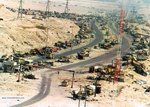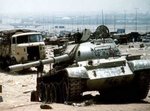I think I can remember something about the plotting by statisticians of bullet holes on an outline of the aircraft and where there were few to no bullet-holes, was where the bullets had hit the Allied planes that didn't make it back. Therefore more armor was put into those places. It seemed to have worked as a strategy...
Sounds like a good idea, in leu of anything else.


